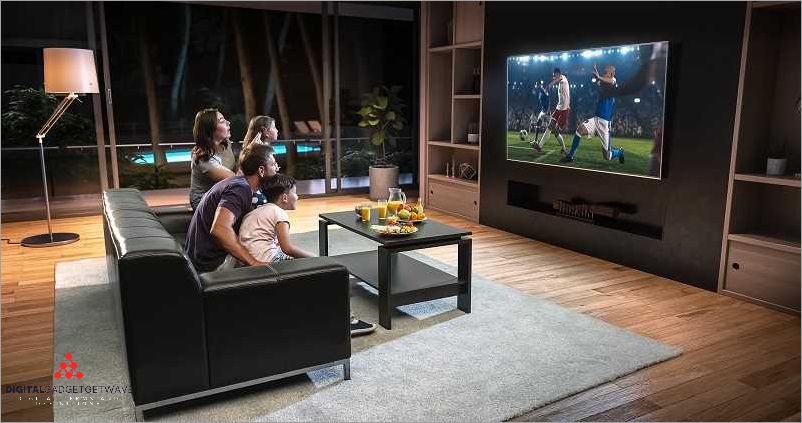
When it comes to watching television or enjoying your favorite shows and movies, the position and viewing angle of your TV can have a significant impact on your overall viewing experience. Finding the optimal angle and positioning for your TV is essential for a clear and enjoyable display.
One of the key factors to consider when determining the best viewing angle for your TV is your own line of vision. You want to ensure that your TV screen is positioned at a height and angle that allows for comfortable viewing without straining your neck or eyes. This can be achieved by placing your TV at eye level or slightly below eye level.
Another important aspect to consider is the distance between you and the TV. The ideal viewing distance will depend on the size of your TV. For larger screens, it is recommended to sit further away to minimize eye strain and ensure a more immersive experience. Conversely, smaller screens may require a closer viewing distance to fully appreciate the details and nuances of the display.
Additionally, the viewing angle plays a crucial role in optimizing your TV watching experience. By positioning your TV at a slight angle, you can minimize glare and reflections, resulting in a clearer and more vibrant image. Experiment with different angles to find the optimal position that works best for your specific environment and lighting conditions.
In conclusion, finding the best viewing angle for your TV is essential for an optimal television-watching experience. By considering factors such as your line of vision, viewing distance, and angle, you can ensure a comfortable and enjoyable display that brings your favorite shows and movies to life.
Contents
- 1 Understanding the Importance of the Viewing Angle
- 2 Determining the Optimal Viewing Angle for Your TV
- 3 Adjusting and Positioning Your TV for the Best Viewing Angle
- 4 Improving the Viewing Angle in Different Room Setups
- 5 FAQ about topic “Find Your Perfect Viewing Angle for Optimal TV Experience”
- 6 What is the best viewing angle for a TV?
- 7 Why is the viewing angle important?
- 8 How can I determine the best viewing angle for my TV?
- 9 Can I improve the viewing angle of my TV if it’s not ideal?
- 10 Are there any tips for improving the viewing angle without changing the TV setup?
Understanding the Importance of the Viewing Angle
When it comes to enjoying a television show or movie, having a clear and unobstructed view of the screen is key. However, the way you position yourself in relation to the television can significantly impact your viewing experience. This is where understanding the importance of the viewing angle comes into play.
A viewing angle refers to the optimal position from which to watch a television or monitor. It determines how well the display is perceived and the quality of the image seen. The ideal viewing angle ensures that you can fully appreciate the visual details and colors portrayed on the screen.
One of the main factors that affects the viewing angle is the type of panel used in the television or monitor. Different types of panels have varying viewing angle capabilities. For example, in-plane switching (IPS) panels offer wider viewing angles compared to twisted nematic (TN) panels.
The viewing angle also affects your comfort while watching TV. If you are sitting at an inappropriate angle, you may find yourself straining your neck or adjusting your position frequently to get a better view. This can lead to discomfort and an overall unpleasant watching experience.
To optimize your viewing angle, consider the following tips. First, ensure that your eyes are level with the center of the television screen. This will allow for a more natural and comfortable viewing position. Additionally, adjust the tilt of the screen to minimize any reflections or glare that may hinder your view.
Remember, the viewing angle is not just important for a single viewer but for multiple viewers as well. If you frequently watch TV with friends or family, it is crucial to select a viewing angle that accommodates everyone’s viewpoint. Consider setting up the seating or furniture in a way that allows everyone to comfortably see the screen without any obstructions.
In conclusion, understanding the importance of the viewing angle is vital for achieving an optimal viewing experience. By positioning yourself correctly and considering the viewing angles of different panels, you can ensure that you fully enjoy the shows and movies you watch on your TV or monitor.
What is a viewing angle?
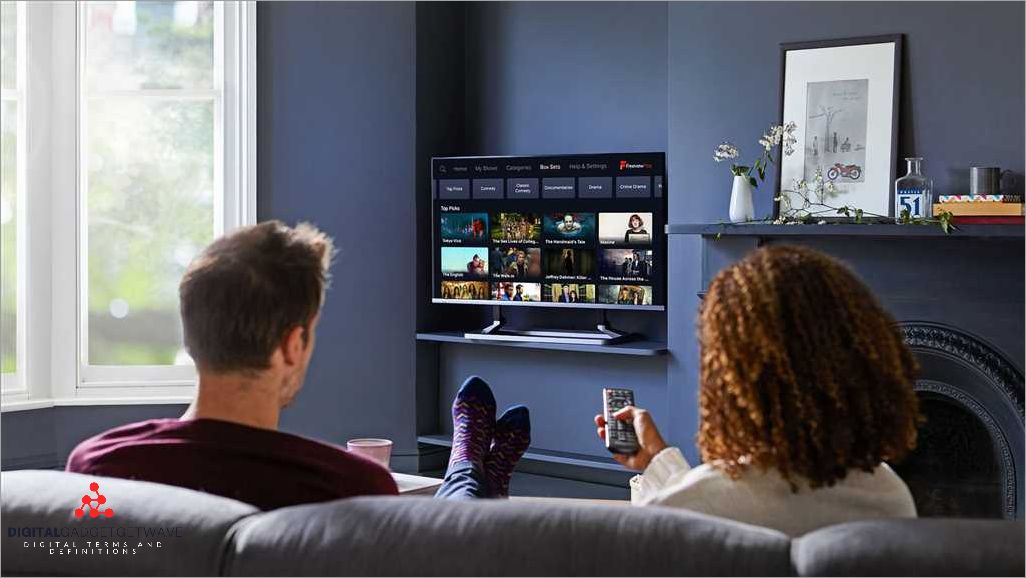
A viewing angle refers to the optimal position for watching a television or monitor screen. It is the angle from which the viewer can have the best visual experience and clarity without any distortion or loss of image quality.
When a television or monitor panel is designed and manufactured, it is important to consider the viewpoint of the watcher. The display should be visible and easy to perceive from different angles. This is especially crucial when you consider that people usually watch TV from various positions in a room.
The optimal viewing angle for a TV or monitor is typically considered to be directly in front of the screen, around eye level. This allows for the best vision and reduces strain on the eyes. However, depending on the size and layout of the room, the position of the viewer may vary.
In addition to the position of the viewer, the angle of the screen also plays a role in the viewing experience. The angle should be adjusted so that the screen is perpendicular to the viewer’s line of sight. This ensures that the image is not distorted or washed out from an extreme angle.
It is important to note that different types of TVs and monitors may have different optimal viewing angles. For example, LCD panels tend to have wider viewing angles compared to earlier technologies like CRT. OLED screens also offer excellent viewing angles, allowing for a clear and crisp image from almost any position in the room.
When setting up your TV or monitor, it is recommended to experiment with different angles to find the one that provides the best viewing experience for you. Adjusting the angle and position can make a significant difference in the visibility and overall enjoyment of the shows or movies you watch.
Why is the viewing angle important?
The viewing angle is an important factor to consider when setting up your display, whether it’s a television or a computer monitor. It refers to the angle from which a watcher can comfortably view the screen without experiencing any distortion in the image or colors.
When watching a television show or movie, a viewer’s viewing angle should be in line with the optimal angle recommended by the manufacturer. This ensures that the colors and details on the screen are accurately displayed and that the viewing experience is immersive.
Without the proper viewing angle, a viewer may experience a decrease in image quality, such as washed-out colors or reduced clarity. This is particularly important when watching sports or other fast-paced content, as a slight change in angle could impact the viewer’s ability to follow the action on the screen.
Television panels are designed to provide an optimal viewing experience at a specific angle. As such, it is important to consider the viewing angle when positioning your television in a room. Ideally, the television should be placed at eye level and directly in front of the viewer for the best viewing experience.
Additionally, the viewing angle is important for those with vision impairments. Individuals with poor eyesight may have specific viewing requirements in order to comfortably watch television. By adjusting the viewing angle to accommodate their needs, they can enjoy their favorite shows without straining their vision.
In conclusion, the viewing angle plays a crucial role in determining the quality of the viewing experience. By considering the optimal angle and positioning your television or monitor accordingly, you can ensure that you see the best possible picture and have a more enjoyable time watching your favorite shows.
Determining the Optimal Viewing Angle for Your TV
When it comes to enjoying your favorite shows and movies, the placement and positioning of your TV can greatly impact your viewing experience. Determining the optimal viewing angle for your TV is essential to ensure that you can fully immerse yourself in the content on display.
First and foremost, it’s important to understand that the optimal viewing angle for a television is typically in front of the screen, at eye level. This allows for a comfortable viewing experience without straining your neck or eyes. Placing your TV too high or too low can negatively affect your overall visual experience.
The size of your TV also plays a role in determining the optimal viewing angle. As a general rule of thumb, the larger the television, the further away you should sit in order to achieve the best viewing experience. It’s recommended to sit at a distance that is equal to three times the diagonal length of your TV. For example, if you have a 50-inch TV, sit approximately 150 inches away.
Another important factor to consider is the type of panel your television uses. LCD and LED panels have wider viewing angles, allowing for a more flexible seating arrangement. On the other hand, OLED TVs have a narrower optimal viewing angle and may require you to sit directly in front of the screen for the best picture quality.
Finally, it’s worth noting that the optimal viewing angle can vary depending on the content you’re watching. For example, if you’re watching a sports game or an action-packed movie, you may prefer a wider viewing angle to capture all the action. On the other hand, if you’re watching a film with stunning visuals, a narrower viewing angle may enhance your experience by ensuring that you don’t miss any subtle details.
In conclusion, determining the optimal viewing angle for your TV is crucial to enjoying your favorite shows and movies to the fullest. By considering factors such as screen placement, TV size, panel type, and content, you can create the perfect viewing experience for yourself and your fellow watchers.
Factors to consider when determining the optimal viewing angle
The optimal viewing angle for a television can vary depending on several factors. The comfort and satisfaction of the watcher should be the primary consideration when determining the ideal angle for watching their favorite shows or movies.
One factor to consider is the angle at which the television is positioned. If the TV is too high or too low, it can cause strain on the neck, leading to discomfort and potential vision problems. It is recommended to position the screen at eye level or slightly below for a more comfortable viewing experience.
Another important factor to consider is the size of the television panel. Larger screens may require the watcher to sit further back or choose a wider viewing angle to fully capture the entire display. On the other hand, smaller screens may not require as much adjustment and can be viewed comfortably from a narrower angle.
The viewer’s individual vision also plays a role in determining the optimal viewing angle. Some people may have better vision from specific angles, such as straight on or slightly to the side. Adjusting the angle of the television can help accommodate and enhance their viewing experience.
The content being watched can also influence the optimal viewing angle. Certain shows or movies may have more action or details that are best appreciated from a specific viewpoint. Experimenting with different angles can help find the best position to fully enjoy and appreciate the visuals on the screen.
Ultimately, finding the optimal viewing angle for a television involves a combination of personal preference, comfort, and visual experience. It is recommended to try different angles and positions to find the best arrangement for the individual watcher. Whether it’s watching a sports event or enjoying a movie, the right viewing angle can make all the difference in the overall enjoyment of the show or display.
Measuring the distance and height for the best viewing angle
When it comes to optimizing the view of your television, the distance and height from the watcher to the screen play a crucial role. Understanding the optimal viewing angle is essential for creating an immersive and enjoyable visual experience.
To determine the ideal distance between the viewer and the TV, it’s important to consider the screen size. A general rule of thumb is to multiply the diagonal screen measurement by 1.5 to 2.5. For example, if you have a 50-inch TV, the optimal viewing distance would be around 75 to 125 inches, or roughly 6 to 10 feet.
In addition to distance, the height of the television should also be taken into account. The ideal height for the TV’s center should be at eye level when the viewer is comfortably seated. This ensures that the watcher’s vision aligns with the center of the screen, providing the best viewing experience. If the TV is positioned too high or too low, it can strain the neck and cause discomfort.
Another factor to consider is the type of panel your TV or monitor has. Different panel technologies have different optimal viewing angles. For example, IPS panels have wider viewing angles compared to TN panels. Understanding the specifications of your display can help you position it correctly and maximize your viewing experience.
It’s also worth noting that the recommended distance and height may vary depending on personal preferences and room layout. Factors such as room size, furniture placement, and the viewer’s eyesight can influence the optimal viewing angle. Therefore, it’s important to experiment with different positions and heights to find the most comfortable and enjoyable setup for your specific environment.
Adjusting and Positioning Your TV for the Best Viewing Angle
When it comes to enjoying your favorite shows and movies on your television screen, the viewing angle plays a crucial role in optimizing your visual experience. Adjusting and positioning your TV correctly can make a significant difference in the picture quality and overall viewing pleasure.
To find the optimal viewing angle, start by considering the distance between your TV and the area where you usually sit or watch. The general rule of thumb is to sit about 1.5 to 2.5 times the diagonal screen size away from your television. For example, if you have a 65-inch television, aim to sit about 8 to 13 feet away for the best viewing experience.
While finding the right distance is important, it is equally crucial to position your TV at the correct height. The center of the screen should be at eye level when you are sitting down. Mounting your TV on the wall or using a stand that allows for height adjustments can help you achieve the optimal viewing angle.
Another factor to consider is the actual angle at which you view the screen. The best viewing angle is usually directly in front, facing the center of the screen. Any deviation from this angle can cause distortion and reduce the overall viewing quality. Avoid positioning your TV in a way that requires constant neck or head movements to watch the content comfortably.
If you have a large room or multiple people watching, consider incorporating a swivel or tilt feature in your TV mount. This allows you to adjust the display based on the viewer’s position and preference. Additionally, using curtains or blinds to control any glare or reflections on the screen can further enhance the viewing experience.
Remember, the optimal viewing angle may vary depending on the type of television you have. It is always a good idea to refer to the manufacturer’s recommendations or consult the user manual for specific guidelines on adjusting and positioning your TV. By taking the time to find the right angle and position, you can ensure an enjoyable and immersive TV-watching experience every time.
Tips for adjusting the angle and positioning of your TV
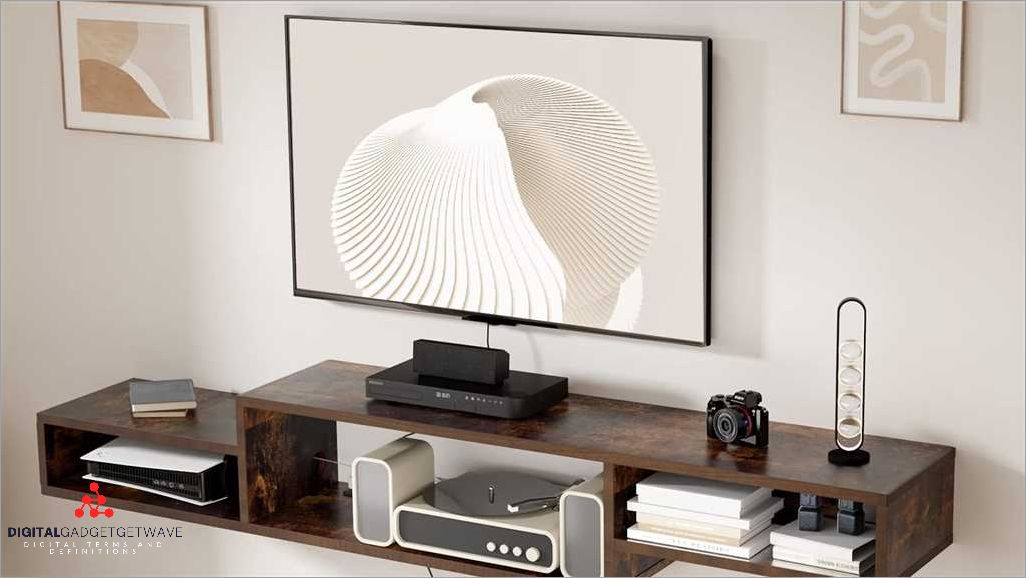
When it comes to optimizing your viewing experience, the angle and positioning of your TV can make a significant difference. Here are some tips to help you find the perfect display position for your television.
Consider the room layout: Take into account the overall layout of the room where your TV is located. Determine where the majority of the viewing will take place and position the TV accordingly. This will ensure that everyone has a clear view of the screen and can enjoy the show without any obstruction.
Find the optimal viewing angle: For the best possible vision, it’s important to adjust the angle of your TV. Ideally, the center of the screen should be at eye level when you are seated. This will minimize strain on your neck and eyes, allowing you to comfortably watch for extended periods.
Consider the size of the TV: The size of the TV screen also plays a role in determining the optimal angle. Smaller TVs can be positioned closer to eye level, while larger TVs may need to be placed slightly higher to maintain a comfortable viewing experience.
Minimize glare: Glare from windows or other light sources can significantly impact your viewing experience. Position your TV in a way that minimizes glare by avoiding direct sunlight or reflections from other light fixtures. This will ensure that you can see the screen clearly and enjoy your favorite shows without any distractions.
Experiment with different positions: If you’re not satisfied with the initial positioning of your TV, don’t be afraid to experiment with different angles and heights. Try out different positions and see which one provides the best view for your viewing habits and preferences.
Consider wall mounting options: If you have limited space or want to create a sleek and modern look, consider wall mounting your TV. This allows you to easily adjust the height and angle of the screen to achieve the optimal viewing position.
By following these tips and adjusting the angle and positioning of your TV, you can enhance your viewing experience and make the most out of your television.
Avoiding common mistakes when positioning your TV
Positioning your television screen is crucial for optimal viewing. Many people make common mistakes when it comes to the angle and placement of their TV, which can negatively impact their viewing experience. Here are some tips to help you avoid these mistakes and ensure that you have the best possible view:
- Find the right angle: It’s important to find the right angle for your television screen. The optimal viewing angle is typically at eye level when you are seated. This allows for a comfortable viewing experience without straining your neck or eyes.
- Avoid placing the TV too high: Placing your TV too high on the wall or a stand can lead to discomfort and neck strain. Keep in mind that the center of the screen should be at eye level to avoid any unnecessary stress on your vision.
- Consider the room lighting: Take into account the lighting in your room when positioning your TV. Avoid placing it near windows or other sources of direct sunlight, as this can cause a glare on the screen and make it difficult to watch your favorite shows.
- Give your TV some breathing room: Avoid placing your television too close to other objects or walls. Providing some space around the TV allows for better ventilation and prevents overheating, which can affect the performance and lifespan of your TV.
- Consider the size of your room: The size of your room should also be taken into consideration when positioning your TV. If you have a large room, consider placing your TV further away from your seating area to ensure a comfortable viewing distance. On the other hand, if you have a small room, placing your TV closer to your seating area can enhance your viewing experience.
By avoiding these common mistakes and following these tips, you can ensure that your TV is positioned correctly for the best viewing experience. Take the time to find the optimal angle and placement for your television, and enjoy watching your favorite shows and movies without any discomfort or distractions.
Improving the Viewing Angle in Different Room Setups
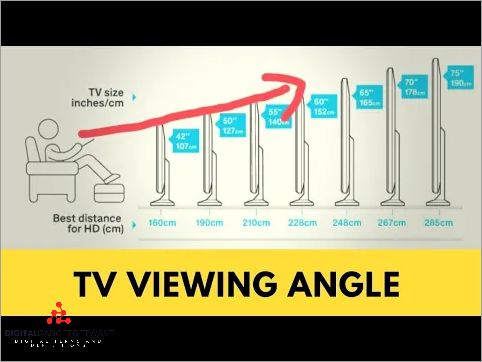
When it comes to watching television, the viewing angle plays a crucial role in ensuring an optimal viewing experience. The angle at which you view the screen can greatly affect the quality of the display and your overall enjoyment of the show or movie. In different room setups, there are various ways to improve the viewing angle and enhance your watching experience.
One way to improve the viewing angle is by adjusting the position of the television or monitor. Placing the display at eye level is important to avoid straining your neck and to have a comfortable viewpoint. If you have a flat panel television, consider mounting it on the wall or using a stand that allows you to adjust the height and tilt of the screen. This way, you can easily find the optimal angle for your vision.
Another way to enhance the viewing angle is by rearranging the furniture in the room. Positioning the seating area directly in front of the television ensures that everyone has a clear view of the screen. Avoid placing the television in a corner or against a wall, as this can limit the angle at which you can watch the TV. Instead, try placing it in the center of the room or on a dedicated TV stand to maximize the viewing angle.
If you have multiple viewers in the room, consider investing in a swivel mount for your television. This allows you to adjust the angle of the screen to accommodate different seating positions. Swivel mounts are particularly useful in larger rooms or open-concept spaces where the viewing angle can vary greatly depending on where you are sitting.
Additionally, you can improve the viewing angle by adjusting the settings on your television. Most modern TVs have options to adjust the picture and display settings, including the brightness, contrast, and color saturation. Experimenting with these settings can help you achieve a better viewing angle and enhance the overall picture quality.
To summarize, improving the viewing angle in different room setups involves adjusting the position of the television or monitor, rearranging the furniture, considering a swivel mount, and adjusting the settings on your television. By taking these steps, you can ensure that everyone in the room has a clear and optimal view of the screen, enhancing the overall watching experience.
Solutions for improving the viewing angle in small rooms
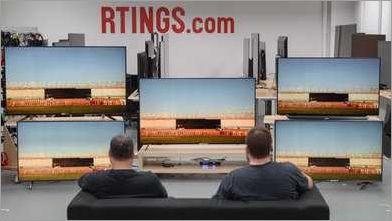
When it comes to watching TV in small rooms, the optimal viewing angle is crucial for a great viewing experience. In such limited spaces, it can be challenging to find the perfect spot to enjoy your favorite shows or movies. However, there are several solutions that can help you improve the viewing angle and make the most out of your TV.
1. Mount your TV on the wall: Mounting your TV on the wall can help you achieve a better viewing angle by allowing you to adjust the height and angle of the screen. This way, you can easily tilt the TV to match your viewpoint and ensure a comfortable viewing experience.
2. Use a swivel mount: A swivel mount is another excellent solution for improving the viewing angle in small rooms. With a swivel mount, you can easily rotate and adjust the TV to find the best position for your viewing pleasure. This flexibility allows you to watch your favorite shows from different angles without straining your neck or eyes.
3. Invest in a monitor arm or stand: If you’re using a computer monitor as a TV, consider investing in a monitor arm or stand that offers adjustable height and viewing angles. This will allow you to position the monitor at the optimal height and angle for comfortable viewing, especially if you spend long hours in front of the screen.
4. Rearrange your furniture: Sometimes, a simple rearrangement of your furniture can significantly improve the viewing angle in a small room. Experiment with different seating arrangements to find the best position that provides an unobstructed view of the TV screen.
5. Consider a larger TV or a curved panel: If you’re still struggling with finding the perfect viewing angle, you might consider upgrading your TV to a larger size or opting for a curved panel. A larger TV will give you a wider viewing angle, while a curved panel can provide a more immersive viewing experience by minimizing viewing angle distortion.
Remember, a good viewing angle is essential for a comfortable and enjoyable TV-watching experience. By implementing these solutions, you can optimize your viewing angle in a small room and make the most out of your television or monitor display.
Solutions for improving the viewing angle in large rooms
When it comes to enjoying your favorite television shows and movies, having the optimal viewing angle is crucial. This is especially true in large rooms where the distance between the viewers and the TV screen can be significant. To ensure that everyone in the room has a clear and unobstructed view, here are some solutions for improving the viewing angle in large rooms.
1. Adjust the position of the TV panel
One of the simplest solutions is to adjust the position of the TV panel itself. By angling the screen slightly downwards or upwards, you can improve the viewing angle for those seated at different heights. Experiment with the tilt feature on your TV or use a wall mount that allows for easy adjustment.
2. Use a monitor arm or swivel stand
A monitor arm or swivel stand can provide even more flexibility in terms of adjusting the viewing angle. With these accessories, you can easily move the TV screen from side to side or even rotate it to accommodate different seating arrangements. This is particularly useful in large rooms where viewers may be situated at different angles.
3. Install multiple TVs or screens
If the room is truly large and there are several viewing areas, consider installing multiple TVs or screens. This way, each area can have its own dedicated screen, ensuring that everyone has a clear view no matter where they are seated. This is a great solution for home theaters or entertainment rooms with multiple zones.
4. Create a seating layout with optimal viewing angles
An effective solution for improving the viewing angle in large rooms is to create a seating layout that takes into account the optimal viewing angles. Arrange the furniture in such a way that all seats have a direct line of sight to the TV. This may involve repositioning the TV or adjusting the furniture placement.
5. Consider using a projection system
If the room is extremely large or if you want to create a true theater experience, consider using a projection system instead of a conventional TV. A projector can display a larger image and can be positioned in a way that provides an optimal viewing angle for all viewers. Combine it with a high-quality screen or wall and you’ll have an immersive viewing experience in any large room.
By implementing these solutions, you can ensure that everyone in a large room has the best possible viewing angle for enjoying their favorite shows and movies. Whether it’s adjusting the position of the TV panel, using a monitor arm, installing multiple screens, creating an optimal seating layout, or using a projection system, finding the right viewing angle will greatly enhance the overall viewing experience.
FAQ about topic “Find Your Perfect Viewing Angle for Optimal TV Experience”
What is the best viewing angle for a TV?
The best viewing angle for a TV is typically straight on, with the center of the screen at eye level. This allows for the most comfortable and immersive viewing experience.
Why is the viewing angle important?
The viewing angle is important because it determines how well you can see the screen from different positions in the room. A good viewing angle ensures that the picture quality is not compromised, and that you can enjoy your favorite shows and movies from any seat in the room.
How can I determine the best viewing angle for my TV?
To determine the best viewing angle for your TV, start by positioning your TV at eye level when you’re seated in your favorite viewing spot. Then, adjust the angle of the TV and the height of your seating until you find the most comfortable and visually pleasing setup.
Can I improve the viewing angle of my TV if it’s not ideal?
If the viewing angle of your TV is not ideal, you can try using a TV mount that allows for tilting or swiveling. This will give you more flexibility in adjusting the angle of the TV to better suit your viewing position.
Are there any tips for improving the viewing angle without changing the TV setup?
Yes, there are a few tips for improving the viewing angle without changing the TV setup. You can try using a TV stand or wall mount that allows for height adjustment, which can help to elevate the TV to a more comfortable viewing level. You can also rearrange the furniture in the room to ensure that there are no obstructions blocking the view of the TV from different angles.


